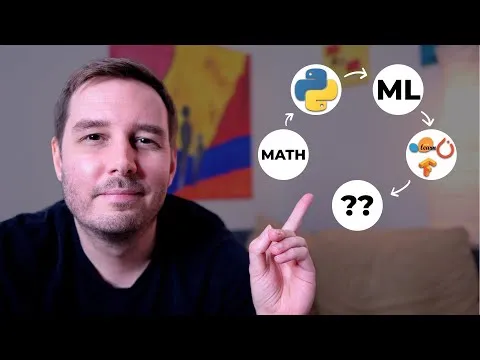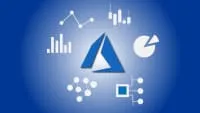
Understanding the World Through Data 
Humans have taught machines to analyze data and make decisions, leading to the development of technologies such as speech recognition, drones, and self-driving cars. This course, "Understanding the World Through Data", explores how data can be used to create these innovative technologies and how they can be used to improve our lives. ▼
ADVERTISEMENT
Course Feature
![]() Cost:
Cost:
Free
![]() Provider:
Provider:
Edx
![]() Certificate:
Certificate:
Paid Certification
![]() Language:
Language:
English
![]() Start Date:
Start Date:
Self paced
Course Overview
❗The content presented here is sourced directly from Edx platform. For comprehensive course details, including enrollment information, simply click on the 'Go to class' link on our website.
Updated in [February 21st, 2023]
Speech recognition, drones, and self-driving cars – things that once seemed like pure science fiction – are now widely available technologies, and just a few examples of how humans have taught machines to analyze data and make decisions. In this hands-on, introductory course, you will examine all the forms in which data exists, learn tools that uncover relationships between data, and leverage basic algorithms to understand the world from a new perspective.
Whether you're a high school student or someone switching careers, all you need to get started in this course is a curiosity about the topic of machine learning and a willingness to tinker around with your computer.
The course is taught by modules. Within each module, you'll have access to videos, short exercises, and a final capstone project. In Module 1, you'll begin by looking at different kinds of data. To help you explore the data, you'll dive right into some programming with the Python programming language. You don't need to have any programming background, we will guide you on how to leverage Python to explore and visualize any data.
One kind of data you'll work with is data that relates one variable to another. Coming up with a relationship between two variables—one depending on the other—is at the center of Module 2. In that module, you'll build up some core concepts before seeing your first machine learning algorithm. The goal is to use programming to create models that describe mathematical relationships between data. You'll be able to see how good the model is and use it to make predictions about new data.
In Module 3, you'll see a discussion about where imperfections in collected data might come from. You rarely have perfectly "clean" data sets, so it's important to understand how imperfections impact the model that an algorithm might come up with. To this end, we will introduce the notion of data distributions and build up to the concepts of biased and unbiased noise.
Another kind of data you'll work with is data that belongs in different groups (or classes). Creating a model that predicts what group data belongs in is at the center of Module 4. You'll work through different ways of thinking about this problem and see three different ways of approaching making such groupings (classification).
(Please note that we obtained the following content based on information that users may want to know, such as skills, applicable scenarios, future development, etc., combined with AI tools, and have been manually reviewed)
This course provides an introduction to machine learning and data analysis. It covers topics such as data types, programming with Python, relationships between variables, data distributions, and classification. It is suitable for anyone with a curiosity about the topic and a willingness to learn.
Possible Development Paths: Learners of this course can develop their skills in data analysis and machine learning, which can lead to a variety of career paths. These include data scientist, software engineer, data analyst, machine learning engineer, and AI researcher. Learners can also use their knowledge to pursue further education in related fields such as computer science, mathematics, and statistics.
Learning Suggestions: Learners can supplement their knowledge from this course by exploring related topics such as data visualization, natural language processing, and deep learning. They can also practice their skills by participating in online coding challenges and competitions. Additionally, they can stay up to date with the latest developments in the field by reading research papers and attending conferences.
[Applications]
At the end of the course, you'll have the opportunity to apply what you've learned in a final capstone project. You'll be able to choose from a variety of topics and datasets, and you'll be able to use the Python programming language to explore the data and create a model.
Upon completion of the course Understanding the World Through Data, students will have the skills to apply the concepts they have learned to real-world data. They will be able to use Python to explore and visualize data, create models that describe mathematical relationships between data, and create models that predict what group data belongs in. Additionally, they will have the opportunity to apply their knowledge in a final capstone project.
[Career Paths]
1. Data Scientist: Data Scientists are responsible for collecting, analyzing, and interpreting large amounts of data. They use a variety of techniques, such as machine learning, to uncover patterns and trends in data. Data Scientists are in high demand, as businesses are increasingly relying on data-driven decisions. The development of new technologies, such as artificial intelligence and the Internet of Things, is creating even more opportunities for Data Scientists.
2. Machine Learning Engineer: Machine Learning Engineers are responsible for developing and deploying machine learning models. They use a variety of techniques, such as deep learning, to create models that can accurately predict outcomes. Machine Learning Engineers are in high demand, as businesses are increasingly relying on machine learning models to make decisions. The development of new technologies, such as natural language processing and computer vision, is creating even more opportunities for Machine Learning Engineers.
3. Data Analyst: Data Analysts are responsible for collecting, analyzing, and interpreting data. They use a variety of techniques, such as statistical analysis, to uncover patterns and trends in data. Data Analysts are in high demand, as businesses are increasingly relying on data-driven decisions. The development of new technologies, such as big data and predictive analytics, is creating even more opportunities for Data Analysts.
4. Business Intelligence Developer: Business Intelligence Developers are responsible for developing and deploying business intelligence solutions. They use a variety of techniques, such as data mining, to create models that can accurately predict outcomes. Business Intelligence Developers are in high demand, as businesses are increasingly relying on data-driven decisions. The development of new technologies, such as artificial intelligence and the Internet of Things, is creating even more opportunities for Business Intelligence Developers.
Course Provider

Provider Edx's Stats at AZClass
Discussion and Reviews
0.0 (Based on 0 reviews)
Explore Similar Online Courses

Learn Live - Introduction to regression models by using R and tidymodels

Free CCNA Configuring EtherChannel Day 23 Lab CCNA 200-301 Complete Course

Python for Informatics: Exploring Information

Social Network Analysis

Introduction to Systematic Review and Meta-Analysis

The Analytics Edge

DCO042 - Python For Informatics

Causal Diagrams: Draw Your Assumptions Before Your Conclusions

Whole genome sequencing of bacterial genomes - tools and applications

How I would learn Machine Learning (if I could start over)

Learn Data Science and Machine Learning on Microsoft Azure


Start your review of Understanding the World Through Data